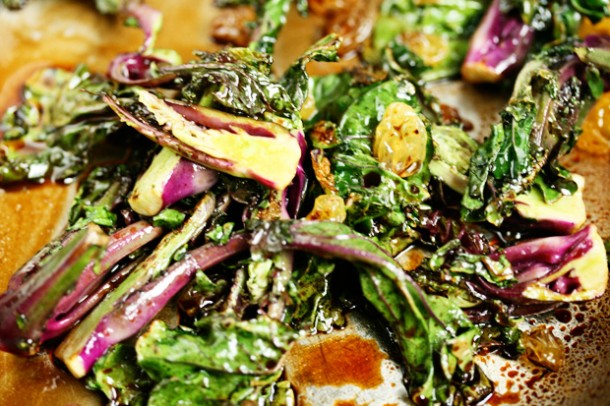 If you’re looking to optimize your health, control your waistline, and have more energy, then eating plenty of vegetables is the best way to do it.
If you’re looking to optimize your health, control your waistline, and have more energy, then eating plenty of vegetables is the best way to do it.
Cooking and spicing vegetables the correct way means that you can take the world’s healthiest foods and turn them into lip-smacking meals that you’ll look forward to preparing for yourself as well as family and friends.
Follow this simple guide to learn all the basics, then check out my post on spices and seasonings for more fun flavorings.
Roasting Vegetables
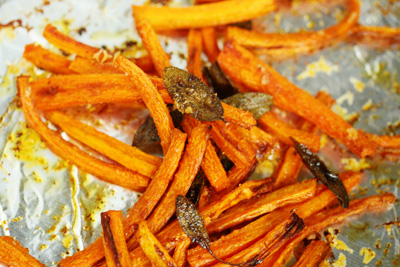 Dense root vegetables benefit from roasting, and sweeten as they cook — this applies to carrots, sweet potatoes, parsnips, potatoes, onions, rutabaga, and yucca.
Dense root vegetables benefit from roasting, and sweeten as they cook — this applies to carrots, sweet potatoes, parsnips, potatoes, onions, rutabaga, and yucca.
- Preheat the oven at 400°F.
- Peel root veggies, and cut into similar size shapes — diced, cubed or slices — so they cook evenly.
- Toss in a large bowl with a few tablespoons of olive oil.
- Add a tablespoon of your favorite herbs such as rosemary, thyme, sage, lavender, oregano, minced ginger or garlic.
- Spread out on an ungreased baking sheet and sprinkle with 1/2 teaspoon salt. For faster clean-up, cover your baking sheets with parchment paper or cover with cooking sprayl.
- Roast for 45 to 50 minutes or until the vegetables are tender.
Gourds and squash are also tasty roasted — pumpkin, butternut squash, kombucha and spaghetti squash all develop a sweet, rich taste after roasting. Cut them in half, remove the seeds, and cut into 2-inch thick wedges — then follow the procedure above. You can leave the skin on and scoop out the cooked flesh once they are roasted or peel them first before slicing into wedges.
Cruciferous vegetables also benefit from roasting, including Brussels sprouts, cauliflower, broccoli, kale, red and green cabbage. Follow the same procedure, but decrease cooking time by 10 to 15 minutes.
Bonus Tip: For even more flavor, finish your roasted vegetables with a drizzle of balsamic, sherry, or apple cider vinegar. Top with toasted sesame, pumpkin, or sunflower seeds. Or blend with store-bought or homemade chicken broth for a healthy soup.
Sautéing Vegetables
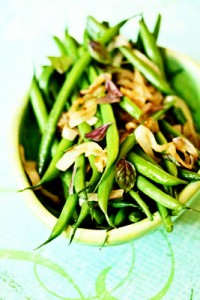 Sautéing is a great technique for vegetables that are less dense and have a more delicate structure like baby greens, including baby kale, spinach, Swiss chard and broccoli rabe.
Sautéing is a great technique for vegetables that are less dense and have a more delicate structure like baby greens, including baby kale, spinach, Swiss chard and broccoli rabe.
This technique also works great for spring and summer vegetables that are high in water content, like yellow squash, zucchini, asparagus, and mushrooms.
Heat a large skillet over medium-high heat and add 1 tablespoon of your favorite healthy oil. Add the prepped veggie, and cook 1 to 2 minutes for greens, or 3 to 4 minutes for thicker veggies like broccoli or kale. If you’re cooking denser root vegetables, you’ll want to cook an additional 5 minutes on low heat. Additionally, you can add a few tablespoons of water, cover with a lid to steam through for 2 additional minutes.
Steaming Vegetables
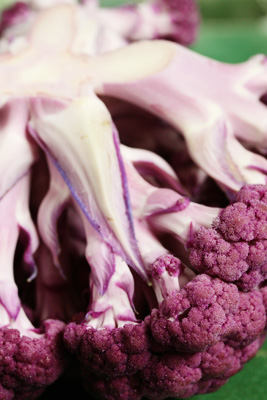 Steaming is not my favorite cooking technique since it’s easy to damage nutrients with overcooking and steaming doesn’t add flavor — feeding the myth that vegetables just don’t taste good.
Steaming is not my favorite cooking technique since it’s easy to damage nutrients with overcooking and steaming doesn’t add flavor — feeding the myth that vegetables just don’t taste good.
However, steaming is still a good technique to have in your skill set, especially if you want to cook for someone who is on a special diet due to allergies or for someone who has to follow a special diet due to illness.
Steamed veggies can be more easily digested and if you follow the steps below, they retain their nutrients:
- Prep your vegetables by cutting them into 2-inch pieces, peel if necessary.
- Fill a large stockpot with one inch of water. If you have a steamer basket, add it. Cover with a lid and bring to a boil over high heat.
- Add the vegetables and cover. For more delicate vegetables like broccoli and zucchini, steam 2 to 3 minutes until tender. For denser root veggies like sweet potato and carrots, steam 4 to 5 minute just until fork tender.
- Never boil veggies in large amounts of water as the water-soluble vitamins and minerals can be lost in the water.
- Have a small bowl of extra water on hand in case you need to refill the stockpot during steaming.
Steamed vegetables work well with strongly flavored sauces and condiments like soy sauce, peanut, chipotle, and vinegars. If you’re cooking for someone on a special diet, ask for the list of spices, herbs, and flavorings that are approved by their doctor.
Bonus Tip: I don’t recommend steaming delicate greens like spinach — you can simply “wilt” them: Place a dry skillet over high heat and add clean spinach leaves. Add one tablespoons of water and toss until the leaves start to soften about 1 minute. Serve immediately.
Searing Vegetables
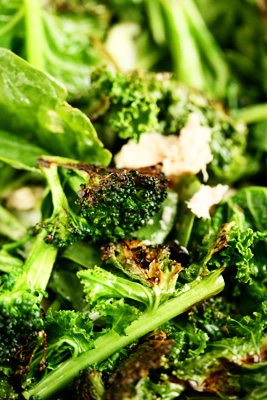 Searing is my all-time favorite and fastest way to get more vegetables onto your dinner table. Just as you would sear chicken or steak, you can brown veggies at high temperatures to give them extra flavor without pre-cooking, using just one skillet.
Searing is my all-time favorite and fastest way to get more vegetables onto your dinner table. Just as you would sear chicken or steak, you can brown veggies at high temperatures to give them extra flavor without pre-cooking, using just one skillet.
- Prep your vegetables just as you would for steaming. Heat a large skillet over high heat and add one tablespoon of high-smoke point oil (such as canola, coconut, or grapeseed oil).
- Carefully add the vegetables and sprinkle with a pinch of salt.
- Cook the vegetables, stirring occasionally, until the vegetables start to brown.
- Reduce the heat to low and cover with a lid. Cook an addition 1 to 2 minutes on low, without stirring until they soften.
- For more dense veggies, add a few tablespoons of water if they are not fork tender. Cover and cook an additional 2 minutes.
- Bonus Tip: When the veggies are steaming hot, sprinkle with a few tablespoons of shredded gourmet cheese — like Emmenthaler, Manchego, or Gorgonzola. Top with ground flax, hot or mild paprika, or a sprinkle of gourmet salt (such as wine, coffee, or bacon flavored salts).
Master Flavorings For Vegetables
 Adding gourmet flair to your vegetable plates makes them look and taste special — and can literally take as little as 5-15 extra minutes, well worth a small time investment.
Adding gourmet flair to your vegetable plates makes them look and taste special — and can literally take as little as 5-15 extra minutes, well worth a small time investment.
Herbs are a simple low-calorie way to add elegance to a vegetarian main or side dish.
You may choose to “fry” your spices first to give them a crispy texture, then crumble them on top of seared or roasted veggies. This works especially well for tougher herbs like rosemary, thyme, sage, oregano, and lavender leaves. Here’s how it works:
Simply remove and discard the stems. Heat a small skillet over medium low and add 1 teaspoon of any healthy oil. Add the herb and cook about 30 seconds, turning often until the herbs browns lightly. Transfer immediately to a plate and crumble over your cooked vegetables. Add freshly grated Parmesan for extra zing.
Recipe for Balsamic Cream
 Vinegar is a tasty way to add tang to veggies, and tastes especially good with all roots vegetables, cruciferous veggies, and summer squashes like zucchini. Here’s how you can make your own balsamic cream:
Vinegar is a tasty way to add tang to veggies, and tastes especially good with all roots vegetables, cruciferous veggies, and summer squashes like zucchini. Here’s how you can make your own balsamic cream:
Place 2 cups of inexpensive balsamic vinegar in a small saucepan. Place over medium low heat and simmer 10 to 12 minutes, stirring occasionally, until the mixture reduces by more then half — it should start to thicken only slightly as it will become denser once it’s completely cool.
Note: Be sure to open a window (or turn on your hood fan if you have one), as the vinegar vapors will have a pungent smell as it reduces.
Balsamic cream tastes amazing with compound butter, chopped crystallized ginger, golden or red raisins, finely sliced dried mango, or chopped goji berries. Store left-over cream in your fridge to use as a drizzle on fresh sweet berries such as strawberries.
Add Your Comments Below
As a professional chef, there’s so many tips and tricks that become second nature — without even thinking about it. Leave your comments and questions below, and I’ll cover those in an upcoming Twitter chat or Google Hangout. The more questions, the better.
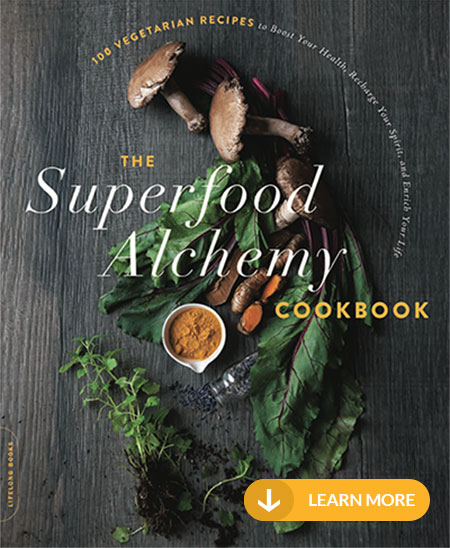

 Are you ready to look better, feel more energized, and get back that youthful feeling you remember having as a kid? I can help you on a journey that will change the way you eat — for good. My
Are you ready to look better, feel more energized, and get back that youthful feeling you remember having as a kid? I can help you on a journey that will change the way you eat — for good. My 











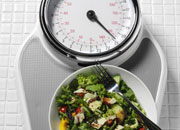


 As a healthy cooking expert, health coach and TV host,
As a healthy cooking expert, health coach and TV host, 

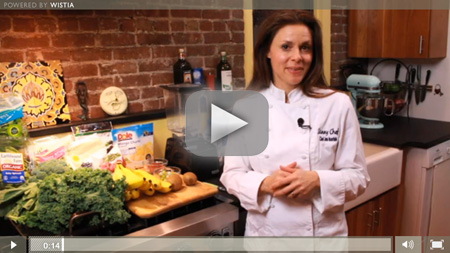
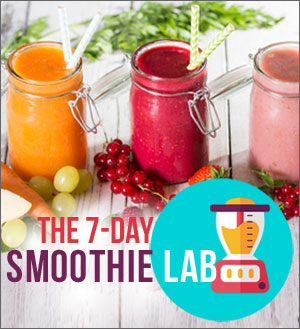
Speak Your Mind